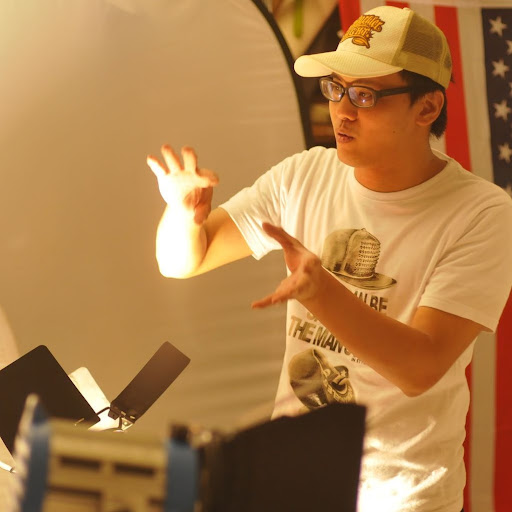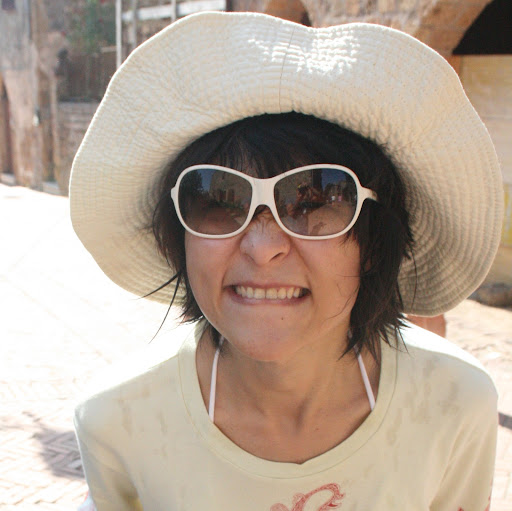Xiaoming M Liu
age ~59
from Freehold, NJ
- Also known as:
-
- Xiao M Liu
- Xiao F Liu
- Xiaoping Liu
- Ng Liu Xiaomi
Xiaoming Liu Phones & Addresses
- Freehold, NJ
- Howell, NJ
- Germantown, MD
- Morrisville, PA
- 2669 Willits Rd, Philadelphia, PA 19114 • 2156710485
- Rockville, MD
- Elmhurst, NY
- 43 Stream Bank Dr, Freehold, NJ 07728
Work
-
Company:Howell Medical Group
-
Address:4677 Us Highway 9 Suite 9, Howell, NJ 07731
-
Phones:7329017786
Education
-
School / High School:Beijing Medical University1990
Languages
English • Chinese
Awards
Healthgrades Honor Roll
Ranks
-
Certificate:Internal Medicine, 2005
Specialities
Internal Medicine
Us Patents
-
Transgenic Animal Model For Spliceosome-Mediated Rna Trans-Splicing
view source -
US Patent:20030204861, Oct 30, 2003
-
Filed:Apr 30, 2002
-
Appl. No.:10/136723
-
Inventors:Madaiah Puttaraju - Germantown MD, US
Lloyd Mitchell - Bethesda MD, US
John Engelhardt - Iowa City IA, US
Xiaoming Liu - Iowa City IA, US -
International Classification:A01K067/027
-
US Classification:800/018000
-
Abstract:The present invention relates to development of an animal model system for in vivo testing of spliceosome-mediated RNA trans-splicing reactions. The present invention provides transgenic animals, and methods for generating such animals, that have been genetically engineered to expresses a target precursor messenger RNA molecule (target pre-mRNA) that serves as a substrate for a trans-splicing reaction. Specifically, the transgenic animals contain at least one transgene capable of expressing a target pre-mRNA molecule. The invention provides methods, based on utilization of the transgenic animals, for assessing the specificity and efficiency of a pre-trans-splicing molecule (PTM) designed to interact with a target pre-mRNA and mediate a trans-splicing reaction resulting in the generation of a novel chimeric RNA molecule. The present invention further relates to the transgenic expression of PTM molecules in animals to determine gene function, i.e, functional genetics. The present invention is based on the successful generation of a transgenic animal expressing a target pre-mRNA and, moreover, the use of that animal to detect accurate in vivo trans-splicing reactions in the presence of a PTM.
-
Methods For Forming Patterned Structures
view source -
US Patent:20090053655, Feb 26, 2009
-
Filed:Mar 21, 2008
-
Appl. No.:12/053058
-
Inventors:Xuegong Deng - Piscataway NJ, US
Jian Jim Wang - Orefield PA, US
Lei Chen - Clarksburg MD, US
Anguel N. Nikolov - Los Angeles CA, US
Nada O'Brien - Santa Rosa CA, US
Xiaoming Liu - Orefield PA, US -
Assignee:NANOOPTO CORPORATION - Somerset NJ
-
International Classification:G03F 7/20
C23F 1/02 -
US Classification:430321, 216 24
-
Abstract:In general, in a first aspect, the invention features a method that includes forming a first layer comprising a first material over a surface of a second layer, wherein forming the first layer includes sequentially forming a plurality of monolayers of the second material over the surface of the second layer, the second layer comprises a plurality of rows of a second material extending along a first direction and spaced from one another in a second direction orthogonal to the first direction, and the first layer conforms to the surface of the second layer. The method further includes removing portions of the first layer to produce a plurality of rows of the first material extending along the first direction and spaced from one another in the second direction and removing portions of a third layer comprising a third material, where the portions correspond to intervals between the second plurality of rows so that removing the portions forms a plurality of rows of the third material extending along the first direction and spaced apart from one another. The first and second materials are different.
-
Assessing Biometric Sample Quality Using Wavelets And A Boosted Classifier
view source -
US Patent:20130148866, Jun 13, 2013
-
Filed:Feb 6, 2013
-
Appl. No.:13/760670
-
Inventors:Lockheed Martin Corporation - Bethesda MD, US
Frederick W. Wheeler - Niskayuna NY, US
Peter H. Tu - Niskayuna NY, US
Xiaoming Liu - Schenectady NY, US -
Assignee:Lockheed Martin Corporation - Bethesda MD
-
International Classification:G06K 9/62
-
US Classification:382115
-
Abstract:A biometric sample training device, a biometric sample quality assessment device, a biometric fusion recognition device, an integrated biometric fusion recognition system and example processes in which each may be used are described. Wavelets and a boosted classifier are used to assess the quality of biometric samples, such as facial images. The described biometric sample quality assessment approach provides accurate and reliable quality assessment values that are robust to various degradation factors, e.g., such as pose, illumination, and lighting in facial image biometric samples. The quality assessment values allow biometric samples of different sample types to be combined to support complex recognition techniques used by, for example, biometric fusion devices, resulting in improved accuracy and robustness in both biometric authentication and biometric recognition.
-
Method And Device For High Speed Electrolytic In-Process Dressing For Ultra-Precision Grinding
view source -
US Patent:6547648, Apr 15, 2003
-
Filed:Oct 13, 2000
-
Appl. No.:09/687548
-
Inventors:Zhenqi Zhu - Holmdel NJ
Xiaoming Liu - Jersey City NJ -
Assignee:Trustees of Stevens Institute of Technology - Graduate School and Research Services - Hoboken NJ
-
International Classification:B24B 100
-
US Classification:451 49, 451 56, 451 72, 451443
-
Abstract:This invention is a process and device for high speed electrolytic in-process dressing (HELID). The device of the present invention may be provided as an add on to an existing grinding machine or may be integrated into a grinding machine as a subsystem. Grinding machines which are subject to the present invention include, but are not limited to, surface, cylindrical, centerless and double-disk grinding machines.
Name / Title
Company / Classification
Phones & Addresses
President
Transnature Organics Corporation
Internal Medicine
Howell Medical Associates
Medical Doctor's Office
Medical Doctor's Office
4677 Us Hwy 9, Wall Township, NJ 07731
Medical Doctor, President, Principal
Xiaoming Liu MD
Medical Doctor's Office
Medical Doctor's Office
4677 Us Hwy 9, Wall Township, NJ 07731
Liu, Dr. Xiaoming
Internist
Internist
4677 Us Hwy 9 STE 9, Howell, NJ 07731
7329017786
7329017786
Resumes

Xiaoming Liu
view source
Xiaoming Liu
view sourceLawyers & Attorneys
Medicine Doctors

Dr. Xiaoming Liu, Howell NJ - MD (Doctor of Medicine)
view sourceSpecialties:
Internal Medicine
Address:
Howell Medical Group
4677 Us Highway 9 Suite 9, Howell, NJ 07731
7329017786 (Phone)
4677 Us Highway 9 Suite 9, Howell, NJ 07731
7329017786 (Phone)
Certifications:
Internal Medicine, 2005
Awards:
Healthgrades Honor Roll
Languages:
English
Chinese
Chinese
Hospitals:
Howell Medical Group
4677 Us Highway 9 Suite 9, Howell, NJ 07731
Kimball Medical Center
600 River Avenue, Lakewood, NJ 08701
4677 Us Highway 9 Suite 9, Howell, NJ 07731
Kimball Medical Center
600 River Avenue, Lakewood, NJ 08701
Education:
Medical School
Beijing Medical University
Graduated: 1990
Beijing Medical University
Graduated: 1990

Xiaoming Liu
view sourceSpecialties:
Internal Medicine
Work:
Howell Medical Group
4677 Us Hwy 9 STE 9, Howell, NJ 07731
7329017786 (phone), 7329014080 (fax)
4677 Us Hwy 9 STE 9, Howell, NJ 07731
7329017786 (phone), 7329014080 (fax)
Education:
Medical School
Beijing Med Univ, Beijing City, Beijing, China
Graduated: 1990
Beijing Med Univ, Beijing City, Beijing, China
Graduated: 1990
Procedures:
Electrocardiogram (EKG or ECG)
Vaccine Administration
Vaccine Administration
Conditions:
Acute Bronchitis
Acute Pharyngitis
Acute Sinusitis
Acute Upper Respiratory Tract Infections
Anxiety Phobic Disorders
Acute Pharyngitis
Acute Sinusitis
Acute Upper Respiratory Tract Infections
Anxiety Phobic Disorders
Languages:
English
Spanish
Spanish
Description:
Dr. Liu graduated from the Beijing Med Univ, Beijing City, Beijing, China in 1990. She works in Howell, NJ and specializes in Internal Medicine.

Xiaoming Liu, Howell NJ
view sourceSpecialties:
Internist
Address:
4677 Us Highway 9, Howell, NJ 07731
Education:
Doctor of Medicine
Board certifications:
American Board of Internal Medicine Certification in Internal Medicine
Googleplus

Xiaoming Liu
Work:
HDLNDIES.tw

Xiaoming Liu
Tagline:
Day Day Up

Xiaoming Liu

Xiaoming Liu

Xiaoming Liu

Xiaoming Liu

Xiaoming Liu

Xiaoming Liu
Youtube
Flickr
Myspace

Xiaoming Liu
view source
Xiaoming Liu
view source
Xiaoming Liu
view source
Xiaoming Liu
view source
Xiaoming Liu
view source
Xiaoming Liu
view source
Xiaoming Liu
view source
Xiaoming Liu
view sourceGet Report for Xiaoming M Liu from Freehold, NJ, age ~59









